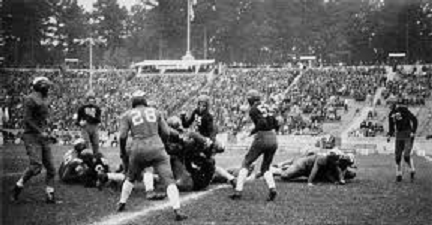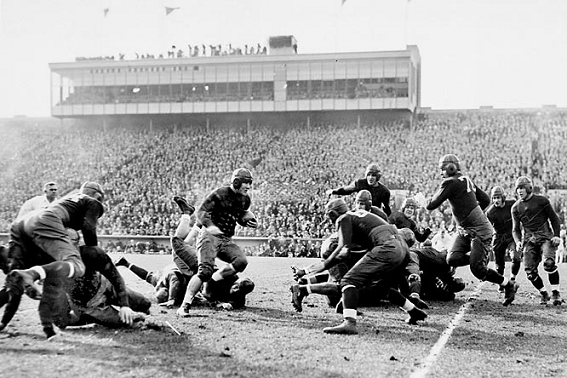
Pictured above is 1931's game of the year, 6-1 Southern Cal at 6-0-1 Notre Dame. Notre Dame had not lost in 26 games, and they carried a 14-0 lead into the 4th quarter. But USC came roaring all the way back, kicking a 33 yard field goal with a minute left for a monumental 16-14 victory. After that USC won out, beating 5-3-1 Washington 44-7, 9-2 Georgia 60-0, and 11-1 Tulane 21-12 in the Rose Bowl. They would certainly have finished ranked #1 in an AP poll had there been one in 1931.

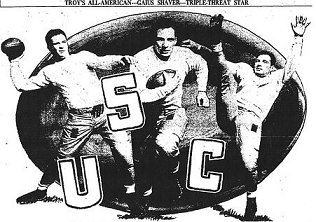
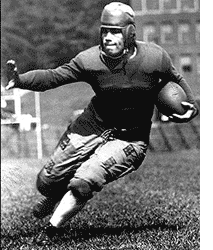
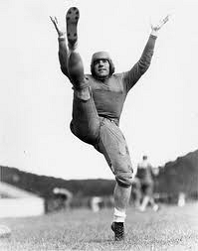
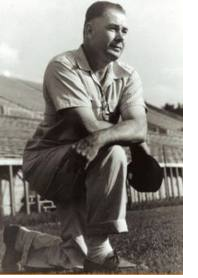 Tennessee was led by Hall of Fame coach Bob Neyland (pictured at left).
Tennessee was led by Hall of Fame coach Bob Neyland (pictured at left). 